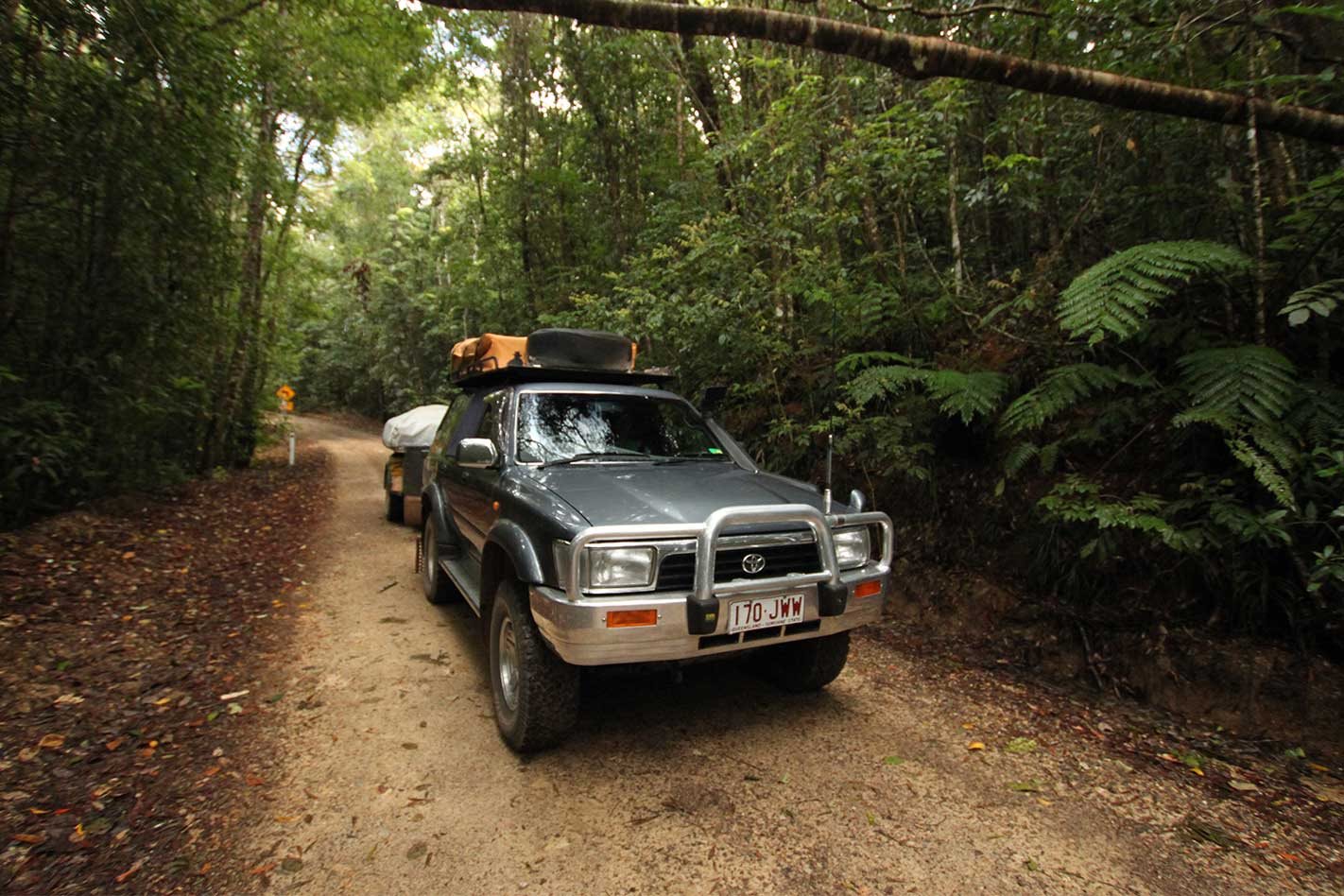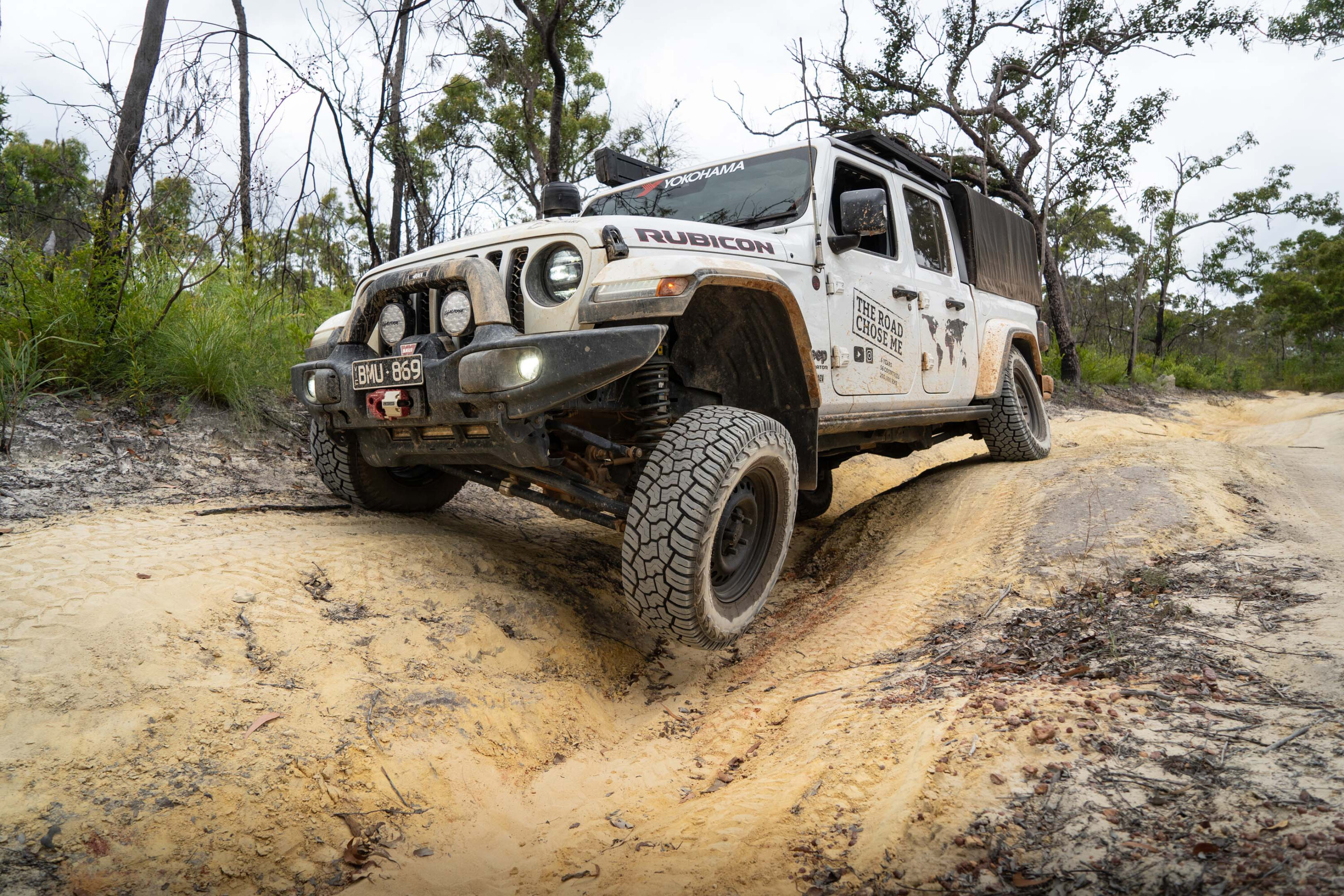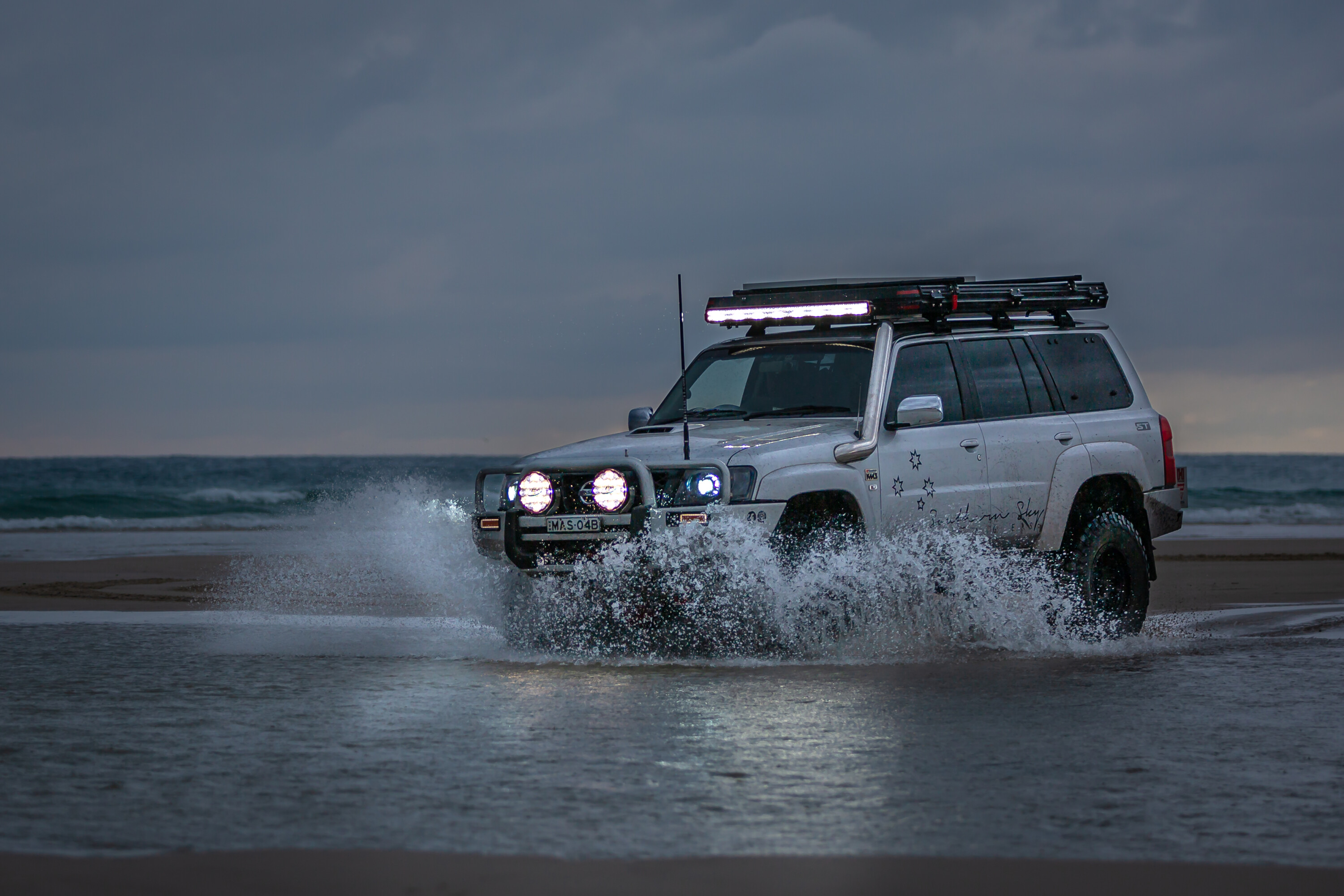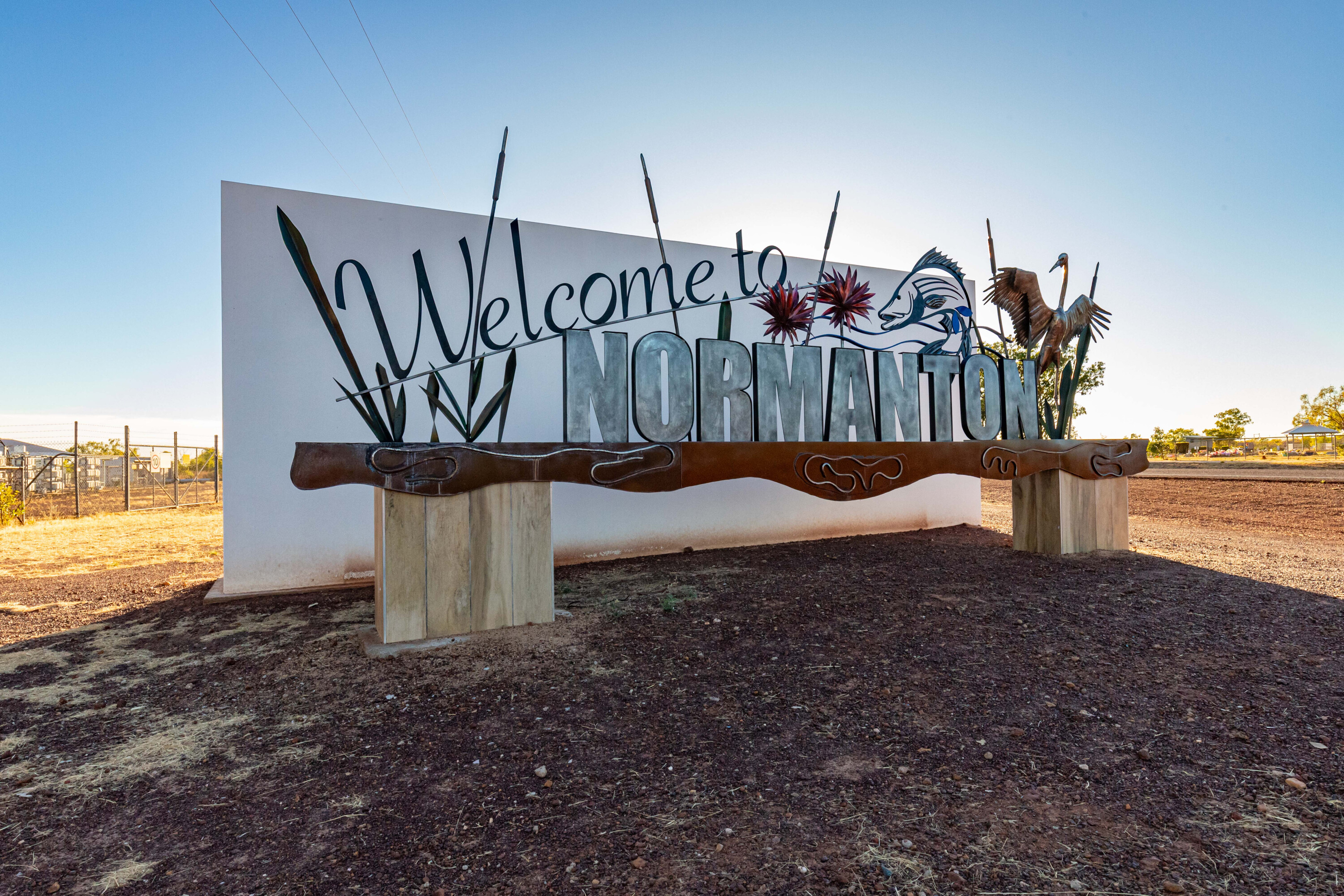After a glorious first day at Lake Paluma with a cloudless blue sky and bright sunshine, we woke up the next morning to find our view limited to low-hanging clouds. It is one thing to read about camping in the clouds, but it is an entirely different thing to experience it.
This feature was originally published in 4×4 Australia’s June 2012 issue
We’d already had an interesting night with a giant white-tailed rat keeping us awake for part of it, as he tried to chew through a plastic box to get to the kids’ Weet-Bix. His attempt failed but the white monster did succeed in ripping open the garbage bag, which Chris had left hanging on a hook in the shower tent.
The rat downed most of the bag’s contents and we were left to clean up the mess. Camping in the wet tropics comes with its own challenges.
The wet start to the day didn’t dampen our spirits. The campground was deserted, giving us the sense we were the only people in the mystical rainforest. Rain dripped continually from the branches and the humidity was high, making it impossible to dry clothes and towels. The kids loved the place because there was plenty of space to ride a bike – this is a popular campsite during the school and Christmas holidays.
Lake Paluma is part of Paluma Range National Park which consists of two sections. Jourama Falls in the north, close to Ingham, and easily accessible. Lake Paluma is in the south and situated high up in the mountains; Mt Spec rises 1000m above sea level.
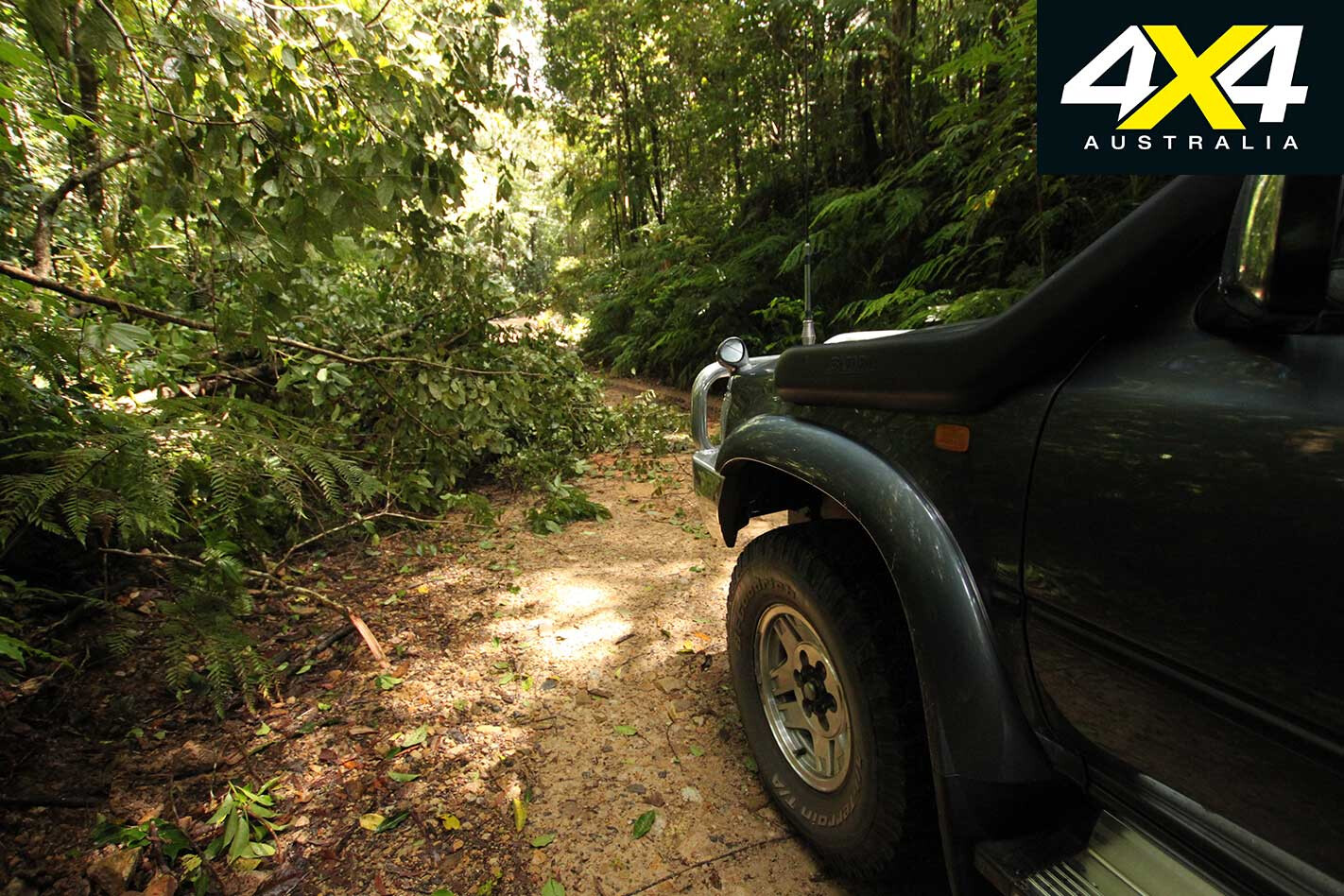
The trip to Lake Paluma is an adventure in itself and a stop at Little Crystal Creek is mandatory. The creek flows all year round and is a popular swimming hole for people from Ingham and Townsville who want to escape the stifling summer heat.
The stone-arch bridge is considered an engineering feat – it was constructed during the Great Depression and took two years to build, from 1932 to 1933. Unemployment relief labour was used with jobs lasting six weeks for single men – 10 weeks if married – for two bob a day, with two men per tent.
After crossing the bridge, it’s an 11km drive to the township of Paluma. Once known as Cloudy Clearing, Paluma developed after the discovery of tin in 1875. The town is thought to be named after HMQS Paluma, a converted gunboat purchased by Queensland Maritime to meet a perceived Russian threat to the colony.
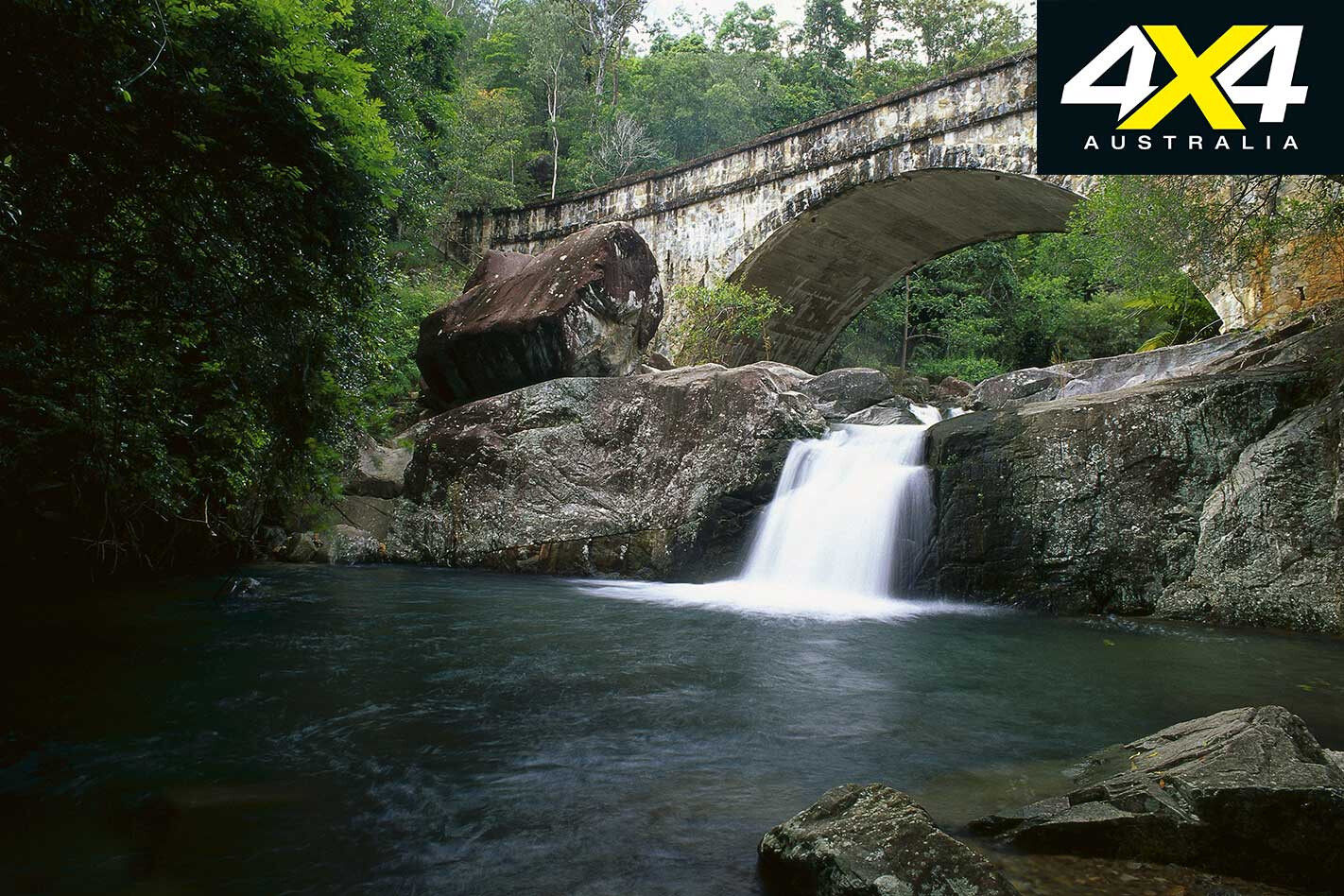
The town was gazetted in 1934, but development came to a halt with the start of WWII in 1939 when its strategic location was recognised – 1000m above sea level and overlooking the Coral Sea. Defence forces took over the town, first the United States followed by the Royal Australian Air Force (RAAF).
American officers worked with Australian defence and scientific personnel on a portable lightweight air warning device that was field-tested around Paluma for the jungles of New Guinea. The Australian army undertook its first jungle training in the surrounding rainforest. RAAF personnel also manned the No.6 Medical Rehabilitation Unit, treating close to 1000 patients over two years.
Today, this peaceful town is mostly made up of holiday houses. There are no shops and you can’t buy fuel. The pottery is an interesting place to visit and a handful of licenced restaurants and a café are open for meals during the dry season. The history of the area has been captured in a series of signs throughout the village at sites of historical significance.
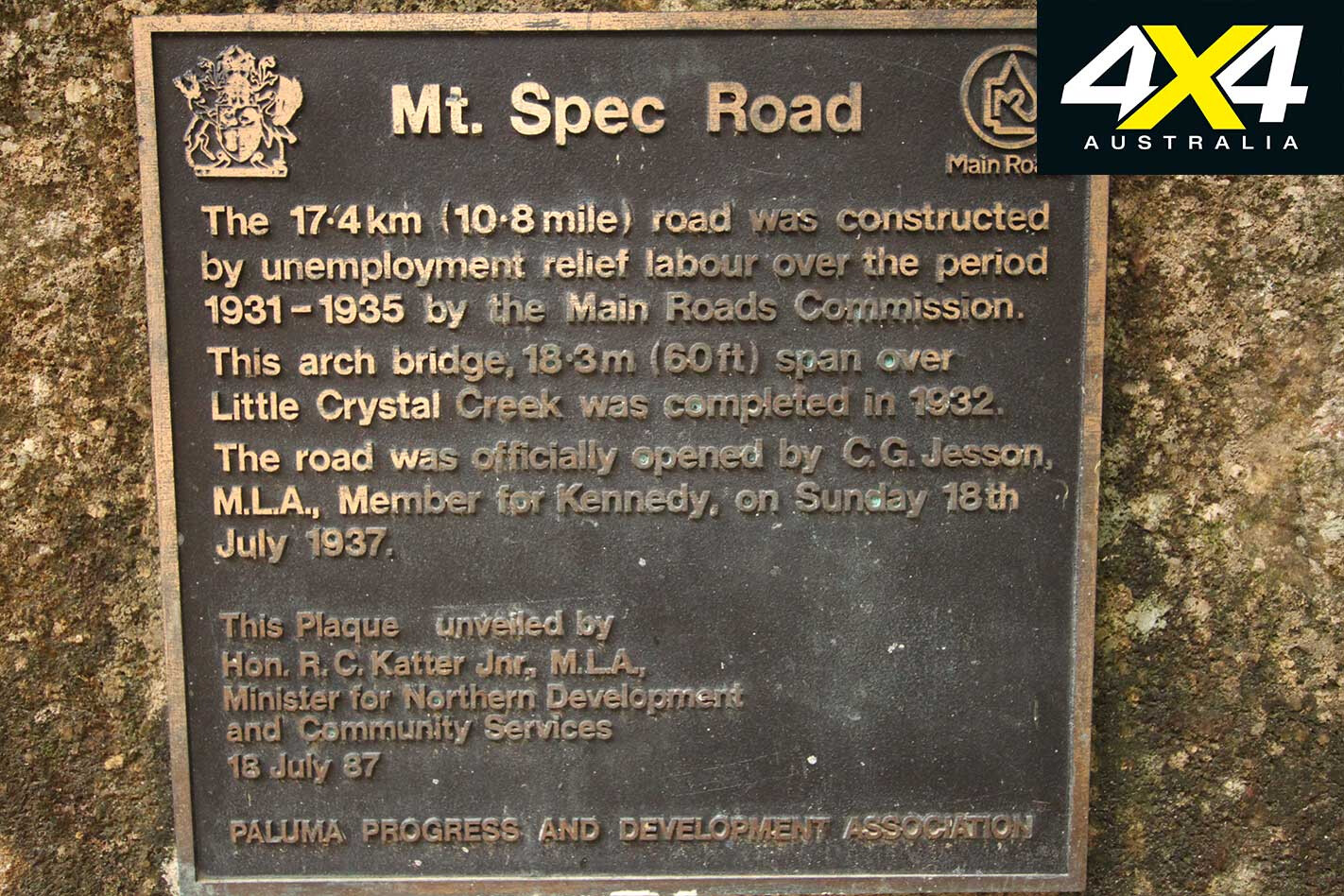
For the energetic, there are a couple of walks from which to choose. McClelland’s Lookout is named after the Main Roads Commissioner who was in charge of overseeing the building of the Mt Spec Road and the stone-arch bridge in the 1930s. On a clear day, the lookout has views to the coast.
The Paluma Rainforest Walk is a 580m circuit which takes you through dense rainforest with strangler figs, king ferns and glowing fungi at night.
More serious bushwalkers can follow the Witt’s Lookout Track, which rewards with more breathtaking lookouts. Cloudy Creek Track is an extension of the Witt’s Lookout Track and is steep – allow two hours for the return trip.
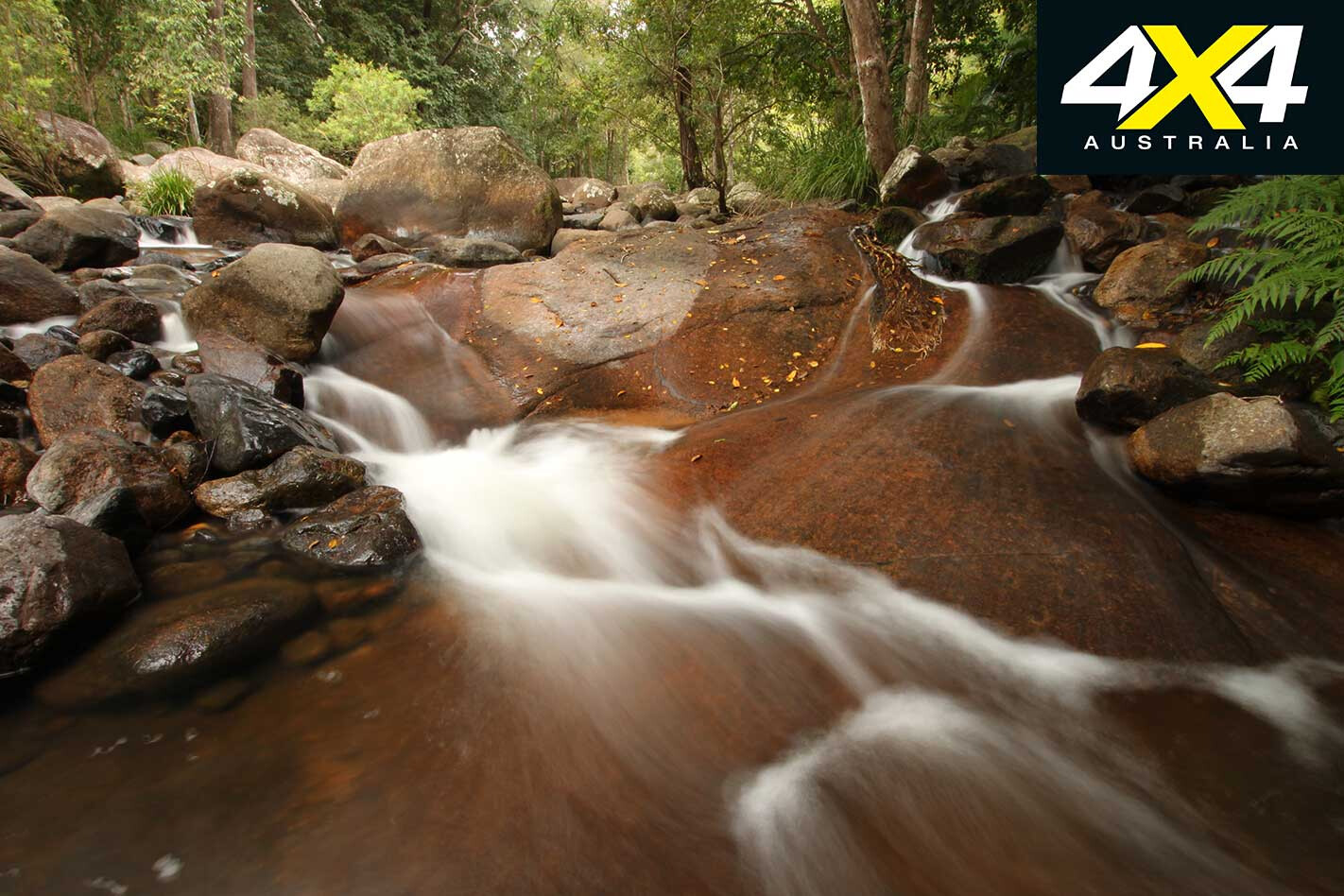
Leaving the township, it’s 3km to the turn-off to the lake where the road turns to dirt. The last 11km takes you through dense rainforest and past the turn-off to Birthday Creek Falls. Take care on this road because it’s usually wet and there are plenty of potholes to make for a rough-and tumble-ride.
Birthday Creek Falls is definitely worth a look as the water flows all year round and you may even spot the elusive golden bowerbird. Wherever you look, almost everything is a dazzling emerald colour, although it’s amazing to see the many different shades of green. Paluma is also a birdwatcher’s paradise, as some of the region’s most endangered species can be found here.
It’s a short drive from the falls to Lake Paluma, where we’d set up camp. The lake is one of the water supplies for the city of Townsville.
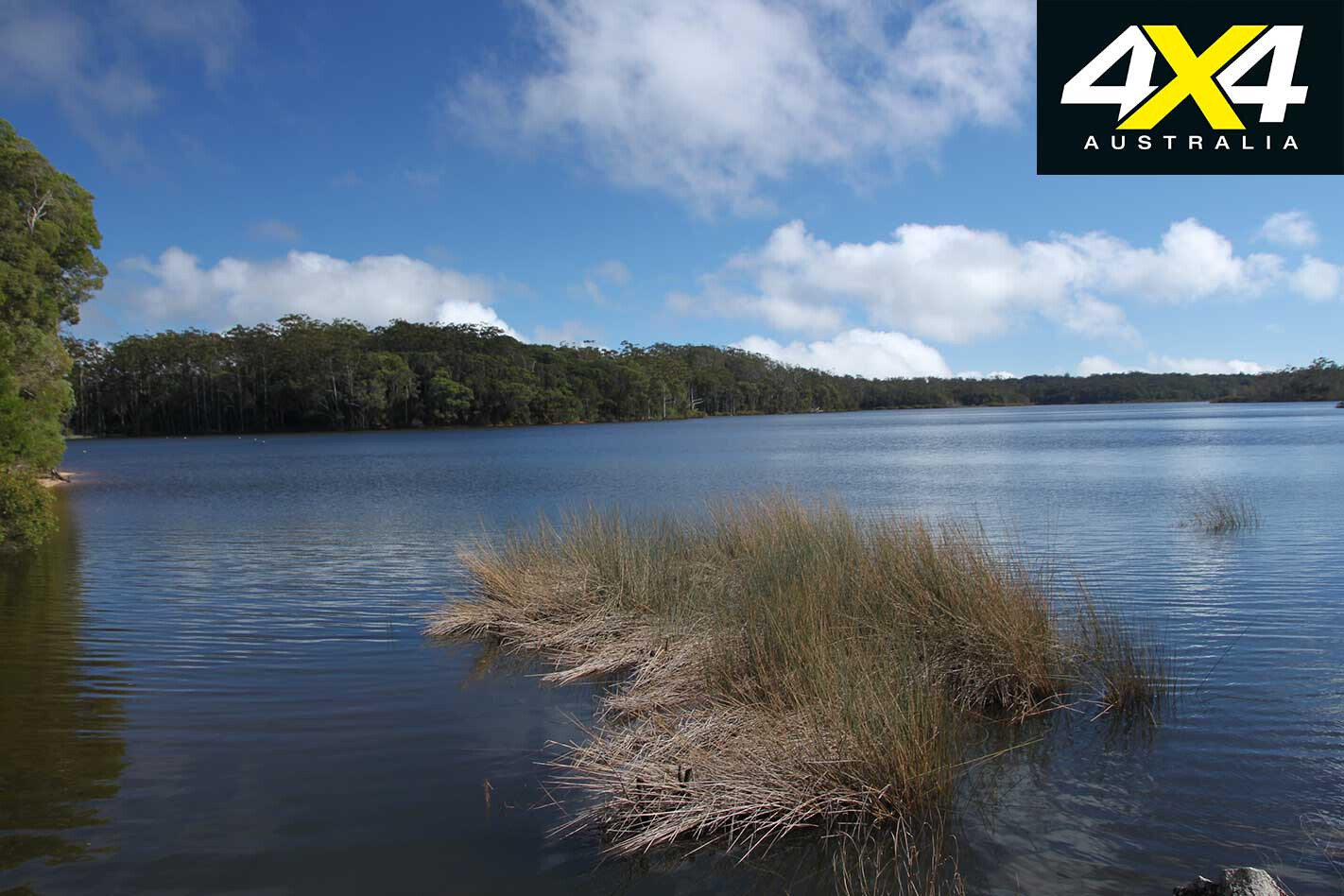
By the 1920s, Townsville had become a thriving place but had outgrown its water supply. The city taps ran brown and dirty and water rationing was common in the dry season. The cool, clear waters of Crystal Creek were seen as a tempting alternative. In 1955, the Townsville City Council completed a pipeline to carry Crystal Creek water to the city reservoirs.
Construction of Lake Paluma began in 1957, but contractors were caught out by heavy rain in 1958 which filled the dam before it could be fully cleared. When dam levels are low, large stumps and hollow logs litter the shoreline. Today, the lake is a great place for swimming and provides relief from the extreme summer heat.
After staring at the clouds for three days in a row, combined with a desperate need for clean and dry clothes, we packed up and headed for Jourama Falls, 40km up the road. It’s an easy drive in the dry season when the causeways have little water over them. The campground turned out to be one large open area with plenty of space for our camper trailer and nice and close to the toilets.
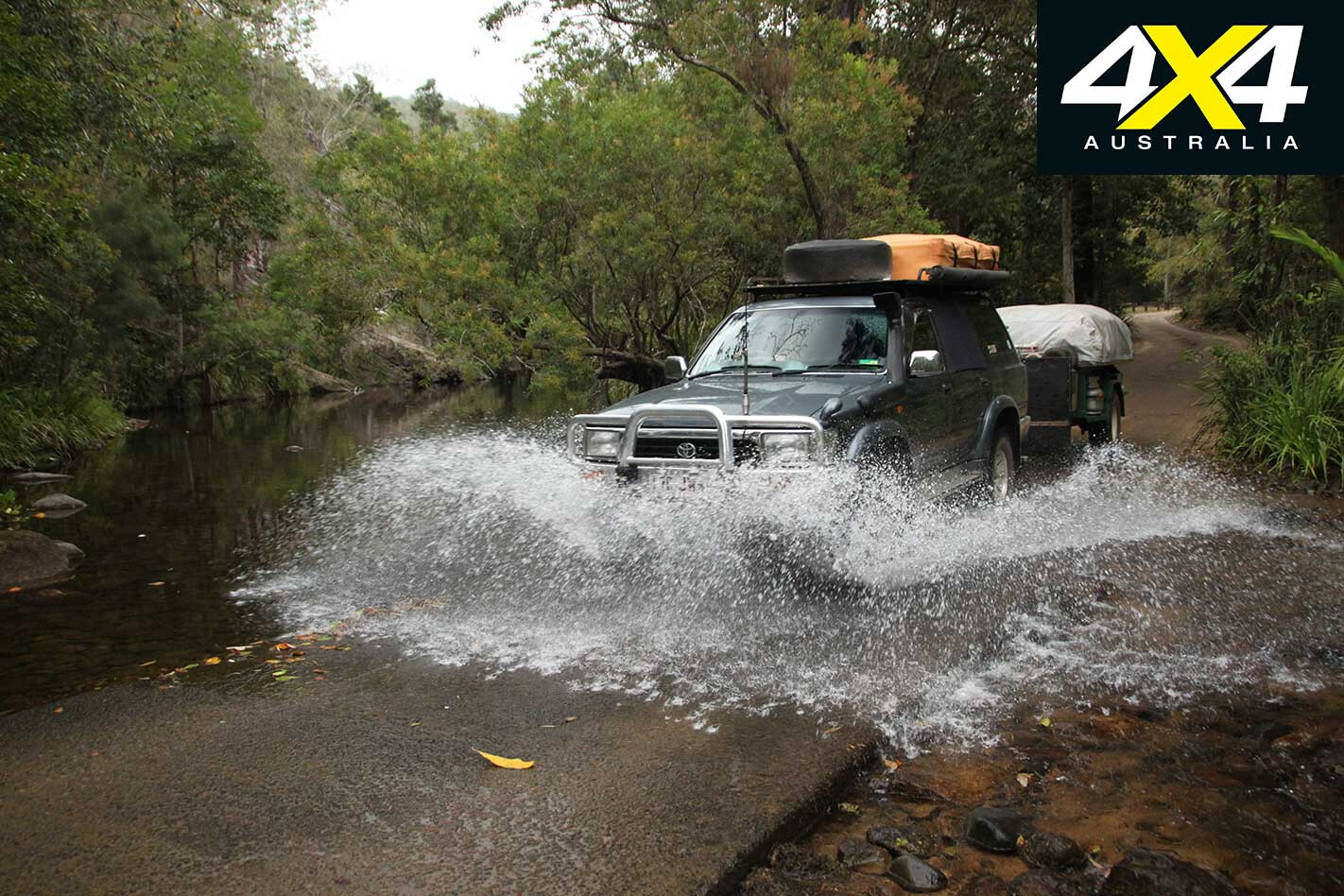
We arrived at Jourama Falls campground on a beautiful sunny day and we lapped up the warmth to dry out our stuff. The kids were eager for a swim in the shallow creek and the concrete causeway was the perfect place to splash around.
We left the walk to the falls for the next day because there was plenty to explore around our camp. A large goanna climbed the tree next to the tent and bush turkeys scratched about in search of food. The spectacular Ulysses butterfly appeared here and there, mesmerising the kids with its bright blue colours. We spent the evening sitting out under a starry sky, soaking up the peace of our tropical surroundings.
Early the next morning we struck out on the walk. The track was challenging at times because it involved some rock-hopping, but the kids managed just fine.
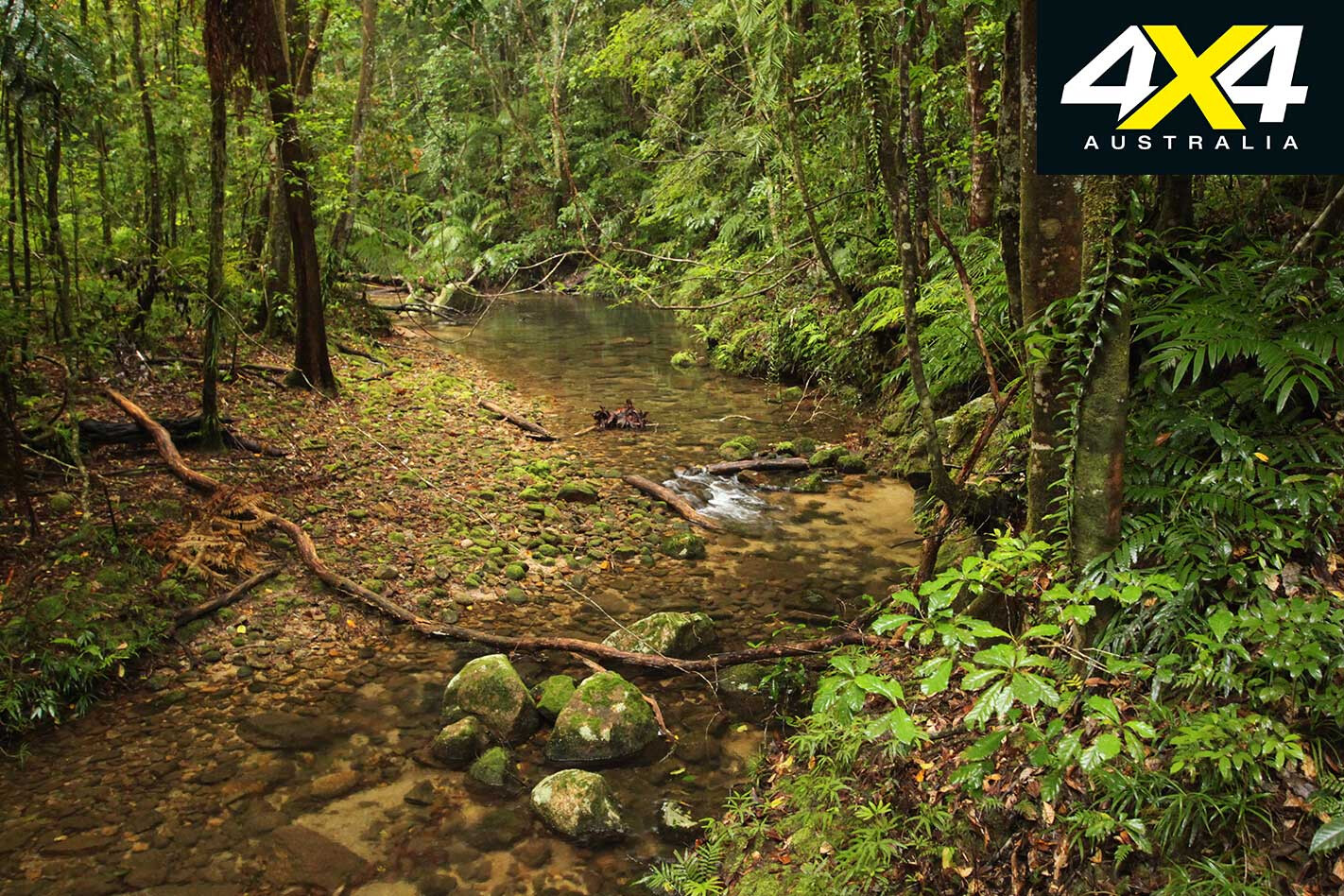
You have the choice of taking the 600m walk up to the lookout, where you are rewarded with views of the falls and surrounding rainforest, or following the creek upstream – either way you get a real tropical rainforest experience.
If you’re feeling game, you can go for a swim in one of the rock pools, where you might spot a freshwater turtle. These relaxed-looking creatures sun themselves on the rocks and logs, quickly retreating into the water at the first hint of danger.
Up at the lookout we marvelled at Jourama Falls, a series of cascades disappeared into deep pools, zigzagging their way down the rocky slope. We couldn’t see the higher slopes of the Seaview Range from the lookout, so the falls appeared to come out of nowhere.
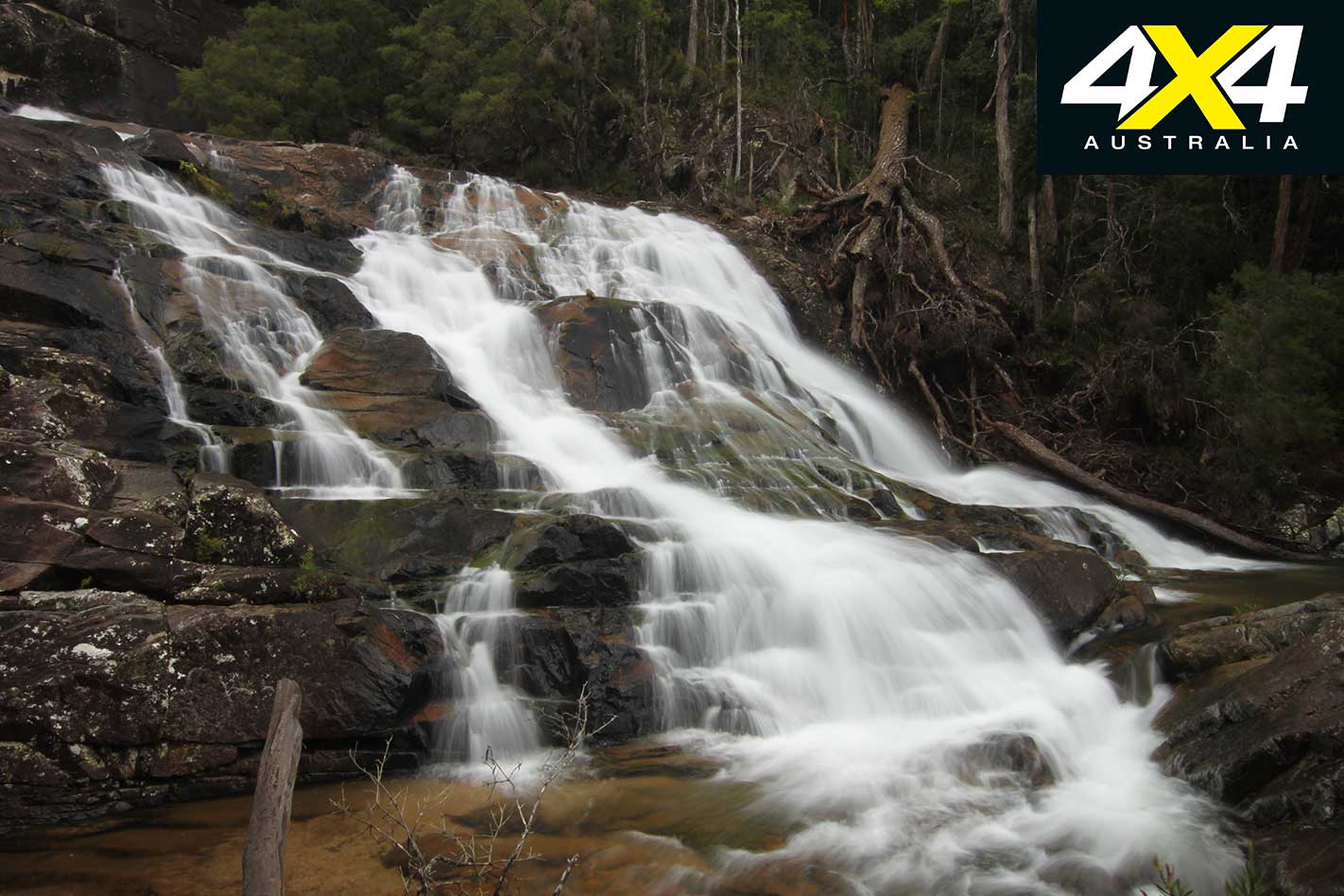
It rained on the morning of our departure, but as soon as we crossed the last causeway and left the rainforest behind us, the sun came out and we breathed a collective sigh of relief.
You don’t visit the wet tropics to soak up the sunshine, but if you’re keen to experience camping in the clouds, Paluma Range NP is definitely the place to go.
Life in the rainforest
For Europeans, life in this high country meant constant hardships and challenges.
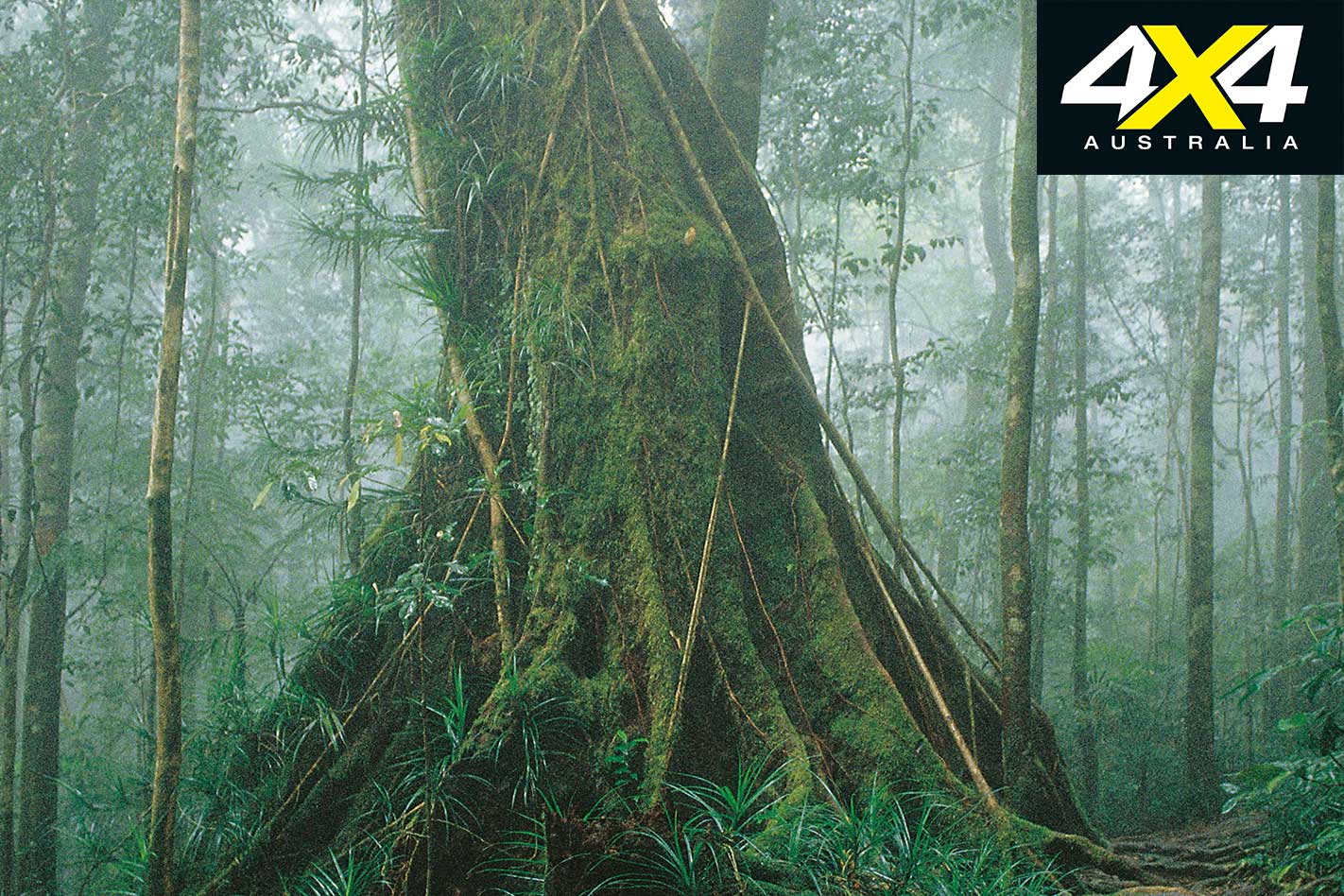
The dense tropical rainforest and mountainous terrain made access and transportation difficult. Continuous heavy downpours during the wet season often made work impossible. To add to the burden, there were infestations of ticks, fleas and leeches and there were always the snakes.
Defence force personnel stationed here during WWII had similar experiences with their clothes getting mildewed and the soles peeling off their shoes. They had to wade knee-deep through the mud and conducted leech-counting contests.
One story tells of two guards brewing some ‘jungle juice’ from unknown ingredients, running amok in their jeep and using their rifles to shoot the insulators off the telegraph poles.
Finally they raced down the mountain, crashed, and had to be lifted into an ambulance and taken away. It makes you wonder about living in the rainforest and how good it is for your health… (Info taken from a sign in Paluma township.)
Kids and Wildlife
Some parents seem to think it is irresponsible to take your kids camping to a place where you know there’ll be snakes, spiders and other creepy-crawlies. Chris and I are of the opinion that it is better to educate your kids about the potential dangers of the bush than to stick your head in the sand.
The rainforest is the one place where you’re guaranteed to come across snakes and other venomous creatures, so your kids need to be well prepared. Some simple and basic rules can be explained to kids as young as three.
Our kids stay close to the campsite and have been taught not to wander off alone. They don’t play in tall grass because they know that’s where snakes like to hide. Up at Cooktown the kids have seen visual displays of snakes and spiders, and at the Lions Den Hotel (Bloomfield Track) they’ve seen dead specimens in a jar. T
he reality is that snakes are more scared of us than we are of them, so the best approach is to leave them alone. We’ve seen many snakes travelling around Australia and our experience is that common sense prevails.
Travel Planner
GETTING THERE Paluma Range NP is split into two sections: Jourama Falls and Lake Paluma, 91km and 61km north of Townsville, respectively.

CAMPING Camping is available at Jourama Falls, but sites must be pre-booked. Fees are $5.30 per person per night, or $21.30 per family per night. Facilities include toilets and cold showers. Dogs and generators are not permitted. Call 13 74 68 for more information.
Campsites at Lake Paluma must be pre-booked. Camping fees apply ($20 per night). There are toilets and a tap with non-drinkable water in the day-use area. Dogs, generators and caravans not allowed.
WHAT TO TAKE Bring food and drinking water as well as a shower tent. Take care of your own rubbish.
SUPPLIES AND FACILITIES Ingham is the closest town with a large supermarket and all other services. There is no fuel at Lake Paluma or Jourama Falls.
TRIP STANDARD The road to Jourama Falls is sealed except for the last 4.5km. It is suitable for standard vehicles and caravans but take care when crossing the two causeways, especially after heavy rain. The first stretch of road to Lake Paluma is sealed but steep, winding and narrow, making it unsuitable for caravans or large motorhomes. The last 12km is dirt road and after heavy rain it can become very wet and rough.
MORE INFO Lake Paluma, phone Townsville City Council on 07 4727 9000 or email enquiries@townsville.qld.gov.au.
PERMITS No entry fee or permit is required for entry into the park.
%MCEPASTEBIN%

